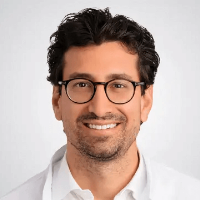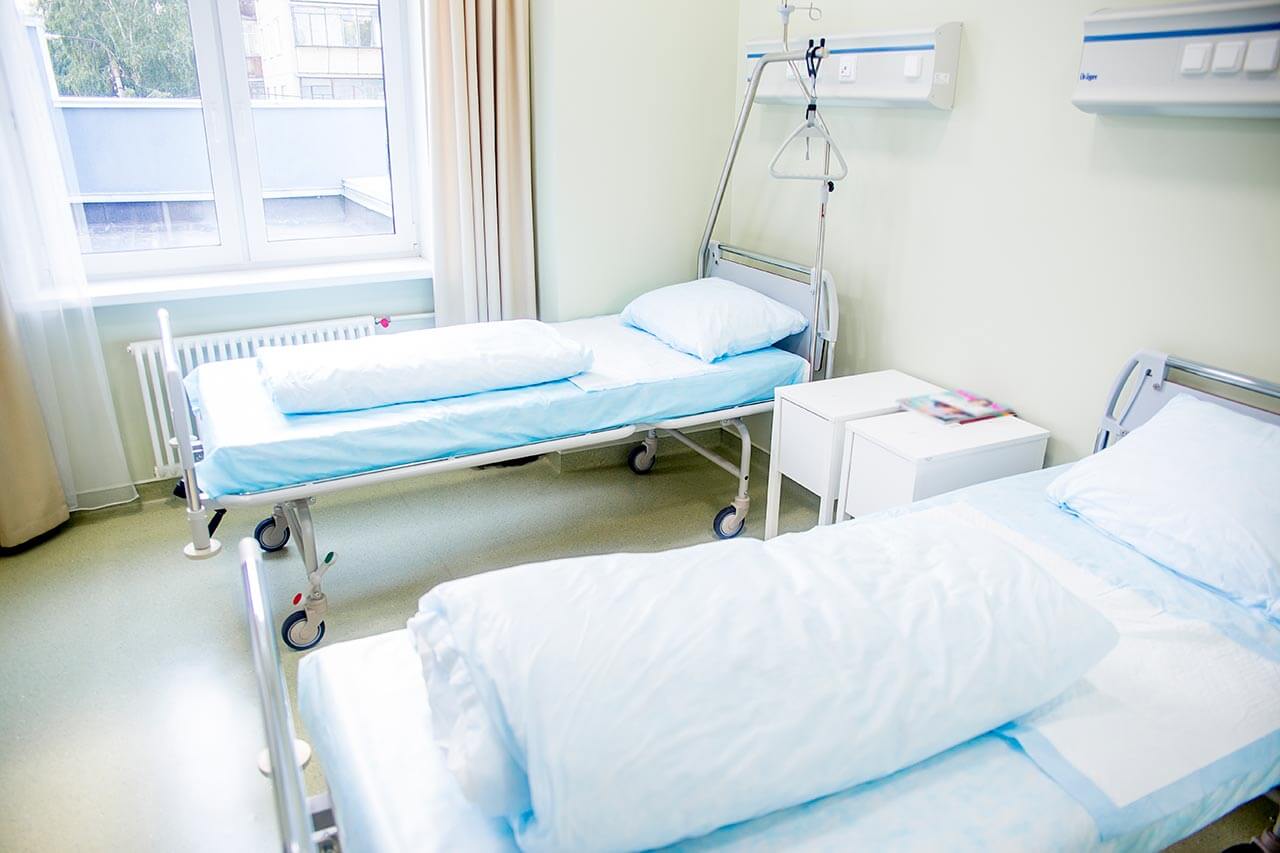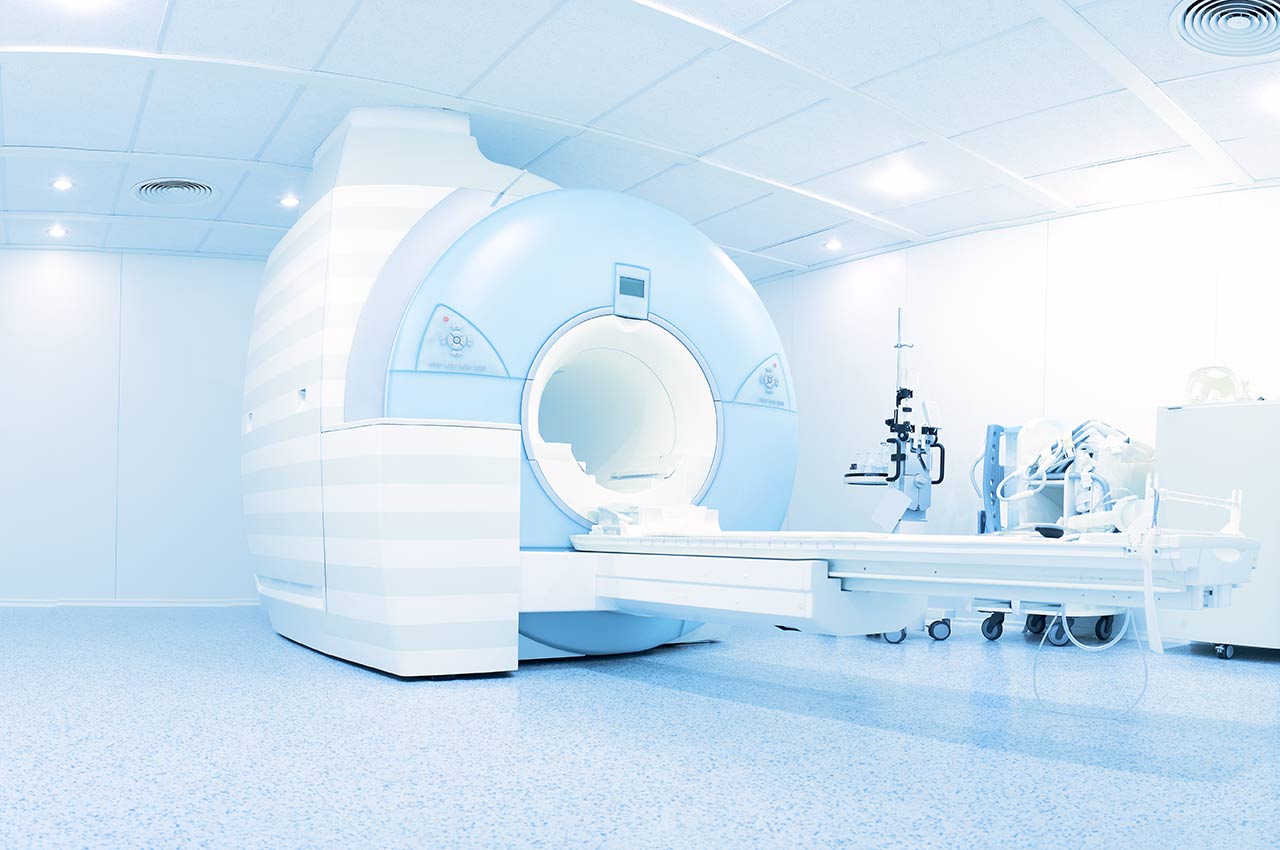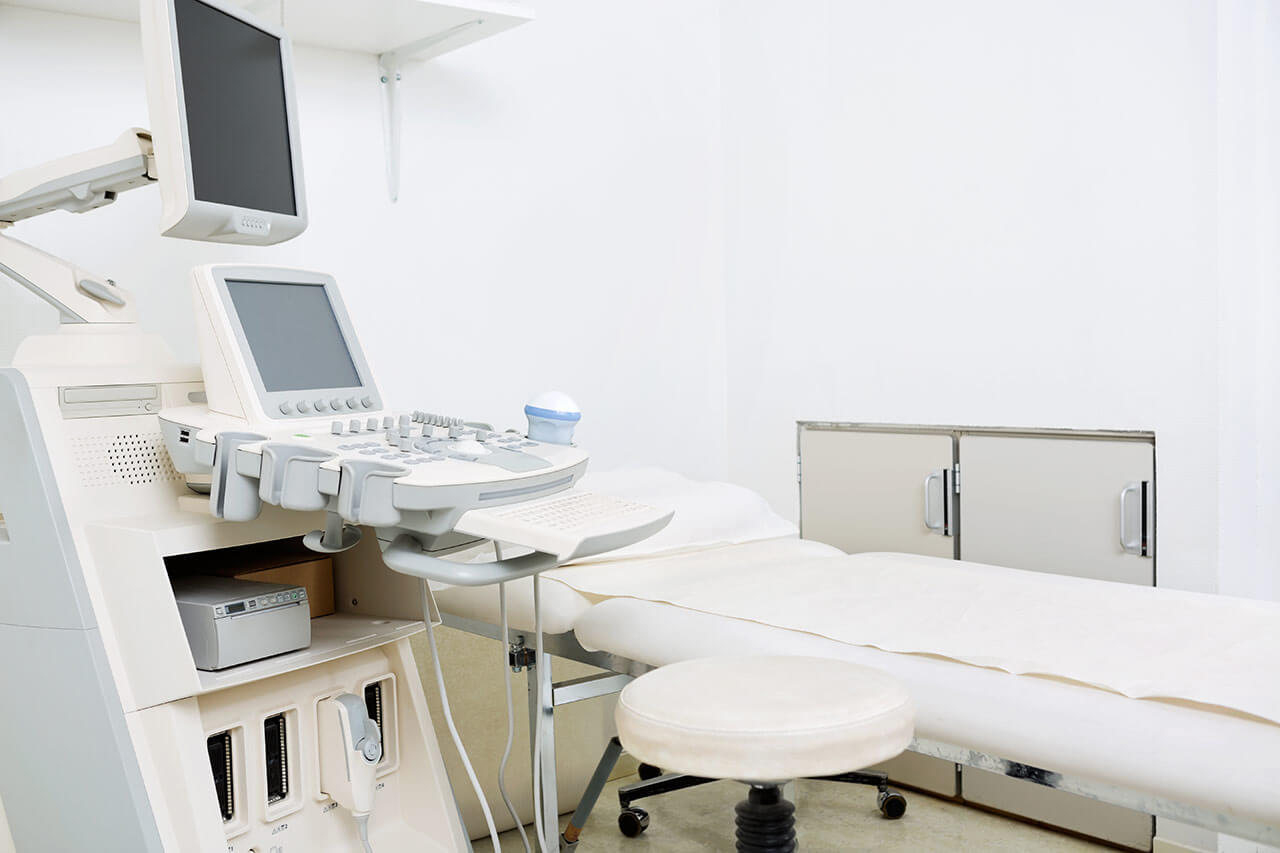
The program includes:
- Initial presentation in the clinic
- clinical history taking
- physical examination
- review of medical records
- laboratory tests:
- complete blood count
- general urine analysis
- biochemical analysis of blood
- indicators of inflammation (CRP, ESR)
- indicators blood coagulation
- x-ray examination of the foot
- CT/MRI scan of the foot
- preoperative care
- design of the patient-specific implant using 3 d system
- computer-assisted foot joint replacement
- cost of the implant included
- symptomatic treatment
- control examinations
- physiotherapeutic procedures
- orthopedic appliances
- the cost of essential medicines and materials
- nursing services
- full hospital accommodation
- explanation of future recommendations
Required documents
- Medical records
- X-ray examination, MRI/CT scan (if available)
Service
You may also book:
 BookingHealth Price from:
BookingHealth Price from:
About the department
According to the prestigious medical magazine Focus, the Department of Orthopedics, Foot Surgery, Hand Surgery and Spinal Surgery at the ATOS Clinic Munich is one of the best medical facilities in Germany, specializing in shoulder and knee surgery, foot surgery, and hand surgery!
The department offers a full range of medical services for diseases of the musculoskeletal system. The key focus of the department's doctors is the treatment of diseases of the large joints: knee, hip, shoulder, elbow, ankle, and wrist. Foot surgery specialists are responsible for the correction of hallux valgus, hallux rigidus, clubfoot, flatfoot, and claw toes, as well as the treatment of ankle arthrosis, heel spurs, and Achilles tendon ruptures. The department regularly admits patients with hand diseases, with particular interest in the treatment of wrist arthrosis, rhizarthrosis, carpal tunnel syndrome, and Dupuytren's contracture. The therapeutic offer is complemented by conservative and surgical treatment of spinal diseases such as herniated discs, spinal canal stenosis, vertebral fractures, and others. The department's medical team offers patients effective conservative treatment methods. However, when surgery is required, arthroscopic and minimally invasive techniques are preferred to ensure the fastest possible postoperative recovery and a high level of safety.
The Head Physician of the department is Prof. Dr. med. Mark Tauber. Of particular clinical interest to the specialist is shoulder surgery: primary and revision shoulder arthroplasty and arthroscopic procedures on the shoulder joint. Prof. Tauber is recognized as one of Germany's top experts in shoulder surgery according to the Focus magazine.
The department has unique expertise in the treatment of shoulder pathologies. The physicians in this area focus on patients with shoulder impingement, shoulder arthrosis, rotator cuff tears, shoulder dislocations, frozen shoulder, and lateral epicondylitis. The team of specialists consists of three highly qualified doctors, each of whom is ranked among the best experts in their field of expertise in Germany (Focus and Stern certificates). The most common shoulder pathology is impingement syndrome. In this condition, the head of the humerus hits the acromial process of the shoulder blade improperly, causing severe pain (especially when raising the arm) and stiffness of the shoulder, up to complete loss of mobility. Diagnosis includes clinical examination with assessment of shoulder range of motion, X-rays, sonography, and magnetic resonance imaging. As for the treatment, it is mostly conservative: doctors prescribe painkillers and local injections of analgesics, physiotherapy, cryotherapy, electrotherapy, and other procedures. The course of conservative treatment lasts 3-4 months. In the advanced stages of shoulder impingement, conservative treatment is ineffective, so the doctors of the department prefer to perform surgery. The operation is performed using minimally traumatic arthroscopic techniques and takes 30-60 minutes, depending on the severity of the clinical case.
The medical facility also provides top-class medical services to patients with knee diseases. The department diagnoses and treats knee arthrosis (gonarthrosis), cruciate ligament ruptures, meniscus tears, patellar dislocations, and knee cartilage lesions. The main diagnostic methods for the above conditions are imaging tests such as X-ray scanning, computed tomography, and magnetic resonance imaging. In complex cases, an arthroscopic examination may be required, which allows for a direct visual assessment of the condition of the cartilage tissue and other structures of the knee joint. Therapeutic options in this area include both conservative and surgical treatments. The basis of conservative therapy is the use of analgesics, intra-articular injections, physiotherapy, and other effective methods. In complex cases, surgery may be necessary. Knee surgery is performed in the department using arthroscopic techniques. The pathological focus is approached through 2 punctures up to 5 mm in size, through which a miniature video camera and instruments for surgical manipulations are inserted into the joint.
The department also offers an innovative procedure for transplanting cartilage cells (autologous chondrocyte implantation), which is indicated for patients with minor cartilage lesions. The treatment consists of the following three stages: the patient's chondrocytes are harvested arthroscopically, processed and cultured in the laboratory, and the biological material obtained is injected into the affected areas of the knee joint cartilage during a repeat arthroscopic procedure. After autologous chondrocyte implantation, knee pain disappears and the progression of arthrosis slows down, making it possible to postpone or avoid joint replacement surgery.
An integral part of the department's daily clinical practice is the treatment of foot disorders. The medical team specializes in the treatment of hallux valgus, hallux rigidus, clubfoot, flatfoot, claw toes, ankle arthrosis, heel spurs, Achilles tendon ruptures, and other pathologies. The department's physicians offer a variety of effective surgical procedures for the treatment of hallux valgus and hallux rigidus, including cheilectomy, osteotomy, and arthrodesis. These surgical procedures are performed using sparing minimally invasive surgical techniques. The department also often admits patients with heel spurs. The majority of cases are managed conservatively with physiotherapy and injections of autologous conditioned plasma, hyaluronic acid, Botox, and nonsteroidal anti-inflammatory drugs.
The department's range of medical services includes the following options:
- Orthopedics
- Diagnostics and treatment of shoulder diseases
- Diagnostics and treatment of shoulder impingement
- Diagnostics and treatment of shoulder arthrosis
- Diagnostics and treatment of rotator cuff tears
- Diagnostics and treatment of shoulder dislocations
- Diagnostics and treatment of frozen shoulder
- Diagnostics and treatment of lateral epicondylitis
- Diagnostics and treatment of knee diseases
- Diagnostics and treatment of knee arthrosis
- Diagnostics and treatment of cruciate ligament injuries
- Diagnostics and treatment of meniscus tears
- Diagnostics and treatment of patellar dislocations
- Diagnostics and treatment of knee cartilage lesions
- Diagnostics and treatment of hip diseases
- Diagnostics and treatment of hip arthrosis
- Diagnostics and treatment of periprosthetic fractures
- Diagnostics and treatment of hip impingement
- Diagnostics and treatment of femoral head avascular necrosis
- Diagnostics and treatment of hip dysplasia
- Diagnostics and treatment of shoulder diseases
- Foot surgery
- Diagnostics and treatment of hallux valgus
- Diagnostics and treatment of hallux rigidus
- Diagnostics and treatment of clubfoot
- Diagnostics and treatment of flat feet
- Diagnostics and treatment of claw toes
- Diagnostics and treatment of ankle arthrosis
- Diagnostics and treatment of heel spurs
- Diagnostics and treatment of Achilles tendon ruptures
- Hand surgery
- Diagnostics and treatment of wrist arthrosis
- Diagnostics and treatment of rhizarthrosis
- Diagnostics and treatment of carpal tunnel syndrome
- Diagnostics and treatment of Dupuytren's contracture
- Diagnostics and treatment of trigger fingers
- Spinal surgery
- Diagnostics and treatment of cervical, thoracic, and lumbar disc herniation
- Diagnostics and treatment of spinal stenosis
- Diagnostics and treatment of spondylolisthesis
- Diagnostics and treatment of vertebral fractures
- Diagnostics and treatment of facet syndrome
- Diagnostics and treatment of scoliosis
- Other medical services
Curriculum vitae
Higher Education and Professional Career
- 1995 - 2001 Medical studies, Medical University of Innsbruck, Austria.
- 2002 One-year practical training, University of Bologna; state medical examination in Italy.
- Since 2004 Clinical training in General Surgery and Orthopedics, hospitals in South Tyrol, Italy.
- 2004 Physician, Department of Trauma Surgery and Sports Traumatology, University Hospital Salzburg.
- 2008 Board certification in Trauma Surgery, Department of Trauma Surgery and Sports Traumatology, University Hospital Salzburg, Austria.
- 2008 Habilitation, Paracelsus Medical Private University, Salzburg, Austria. Subject: "The use of the pectoralis major muscle in reconstructive shoulder surgery".
- 2009 Physician, Department of Orthopedics and Sports Traumatology, Rosenheim Hospital.
- 2010 Board certification in Orthopedics and Trauma Surgery, Bavarian Medical Association.
- Until October 2010 Senior Physician and Supervisor, Department of Trauma Surgery and Sports Traumatology, University Hospital Salzburg, Austria.
Clinical Interests
- Primary and revision shoulder arthroplasty.
- Arthroscopic rotator cuff suturing.
- Treatment of fractures of the humeral head and their long-term complications.
- Arthroscopic and open shoulder stabilization after dislocation.
- Treatment of acromioclavicular joint dislocations.
- Treatment of early stages of shoulder arthrosis using cartilage tissue regeneration.
- Treatment of frozen shoulder.
Prizes, Awards, and Honors
- June 2012 and June 2011 "Golden Scientific Award", Paracelsus Medical Private University, Salzburg, Austria.
- June 2010 Researcher of the Year Award, Paracelsus Medical Private University, Salzburg, Austria.
- December 2008 Dr. Reiner Brettenthaler Research Fellowship, Salzburg Medical Association.
- October 2008 "Günther Schlag Abstract Prize", Austrian Society of Trauma Surgery (ÖGU).
- May 2008 Researcher of the Year Award, Paracelsus Medical Private University, Salzburg, Austria.
Memberships in Professional Societies
- German Society for Shoulder and Elbow Surgery (DVSE).
- European Society for Surgery of the Shoulder and Elbow (SECEC).
- Italian Society of Shoulder and Elbow Surgery (SICSeG).
- German Arthroscopy Association (AGA).
Photo of the doctor: (c) ATOS Klinik München
About hospital
According to the medical magazine Focus, the ATOS Clinic Munich is one of the best medical facilities in Germany for shoulder and knee surgery, foot surgery, and hand surgery!
The clinic was opened in 2008, and in a relatively short period of time, has taken a leading position among the best medical complexes in Germany. The clinic diagnoses and treats the entire spectrum of diseases of the musculoskeletal system: pathologies of the knee, hip, shoulder, elbow, ankle, and wrist joints, foot diseases, hand diseases, and spinal conditions. The clinic also offers the services of the Department of Plastic Surgery, whose specialists masterfully perform reconstructive and aesthetic plastic surgery on the face and body. The clinic offers a personalized approach to treatment, combining integrative therapy with advanced medical technologies. The goal of the specialists is to provide each patient with high-quality medical care that takes into account their needs and features.
The ATOS Clinic Munich has a team of highly competent doctors with extensive clinical experience in orthopedics and plastic surgery. Many specialists are ranked among the best doctors in Germany by renowned medical journals, including Focus magazine. The doctors devote sufficient time to individual consultations, during which they study the diagnostic results and determine the optimal treatment tactics for the patient. Surgery for orthopedic diseases is a last-line treatment and is prescribed only when conservative therapy fails. Prior to each plastic surgery procedure, the surgeons use innovative computer programs to simulate the patient's postoperative images, which allows for a preliminary assessment of the plastic surgery result and maximum patient satisfaction.
The clinic has the latest generation of diagnostic equipment for instrumental examinations: X-ray, sonography, computed tomography, and magnetic resonance imaging. Treatment involves highly effective conservative methods, including intra-articular injections of hyaluronic acid and autologous plasma, physiotherapy, cryotherapy, heat therapy, electrotherapy, ultrasound therapy, etc. Surgery is performed using minimally invasive surgical techniques. Joint surgeries are most often performed endoscopically, and spinal surgeries are performed using microsurgical and minimally invasive techniques.
The specialists at the ATOS Clinic Munich are convinced that the success of treatment is influenced by the atmosphere in the medical facility, so here patients can relax as much as possible and focus on their health. The clinic has 40 beds: there are 23 standard single patient rooms, 13 single enhanced-comfort patient rooms, 2 luxury suites, and one double room, while the patient rooms are more reminiscent of a first-class hotel.
Based on the clinic's treatment success reports and patient reviews, the level of satisfaction with medical services here reaches 96%, which is a very high indicator that speaks for itself.
Photo: (с) depositphotos
Accommodation in hospital
Patients rooms
The patients of the ATOS Clinic Munich stay in comfortable single rooms. The clinic offers standard patient rooms, enhanced-comfort patient rooms, and luxury suites. All patient rooms are bright, comfortable, and spacious, each with air conditioning, radio, minibar, and safe. Many patient rooms have a comfortable corner sofa where the patient can communicate with visitors. The clinic also has special patient rooms for people with disabilities. The patient rooms are equipped with a modern multimedia system with Wi-Fi, telephone, and TV to ensure that the patients have the most comfortable stay in the clinic. Each patient room has an ensuite bathroom with a shower and a toilet, as well as basic toiletries.
Meals and Menus
The clinic offers delicious and well-balanced meals three times a day: breakfast buffet, lunch and dinner. For lunch, you can choose from three set menus consisting of an appetizer or soup, a main dish, and dessert. Dinner consists of a three-course menu: salad, cold main course, and dessert. You can also enjoy a cup of coffee or tea and a piece of cake at lunch.
The clinic takes into account the dietary preferences of patients, so if, for some reason, you cannot eat all the products, you will be offered an individual menu. Please inform the medical staff of your dietary preferences prior to the treatment.
Further details
Standard rooms include:
![]() Toilet
Toilet
![]() Shower
Shower
![]() Wi-Fi
Wi-Fi
![]() TV
TV
Accompanying person
Your accompanying person may stay with you in your patient room or at the hotel of your choice during the inpatient program.
Hotel
You may stay at the hotel of your choice during the outpatient program. Our managers will support you for selecting the best option.





